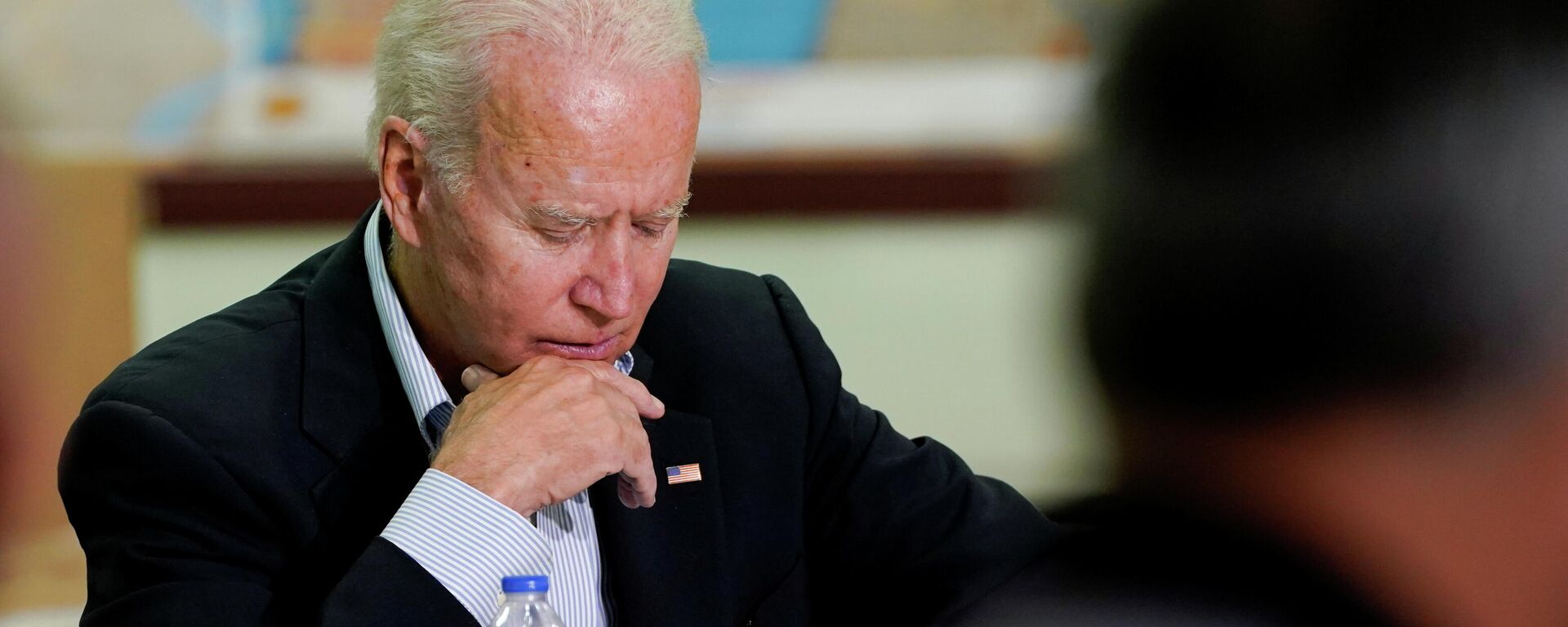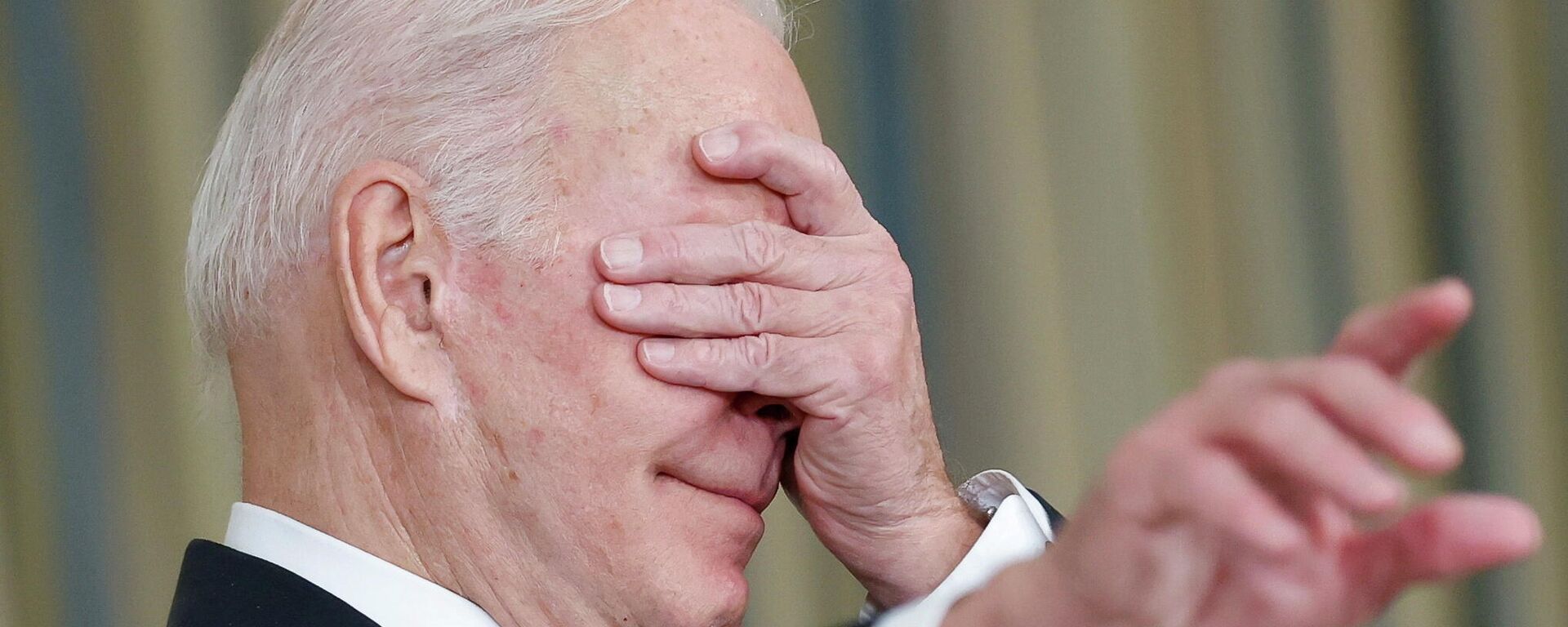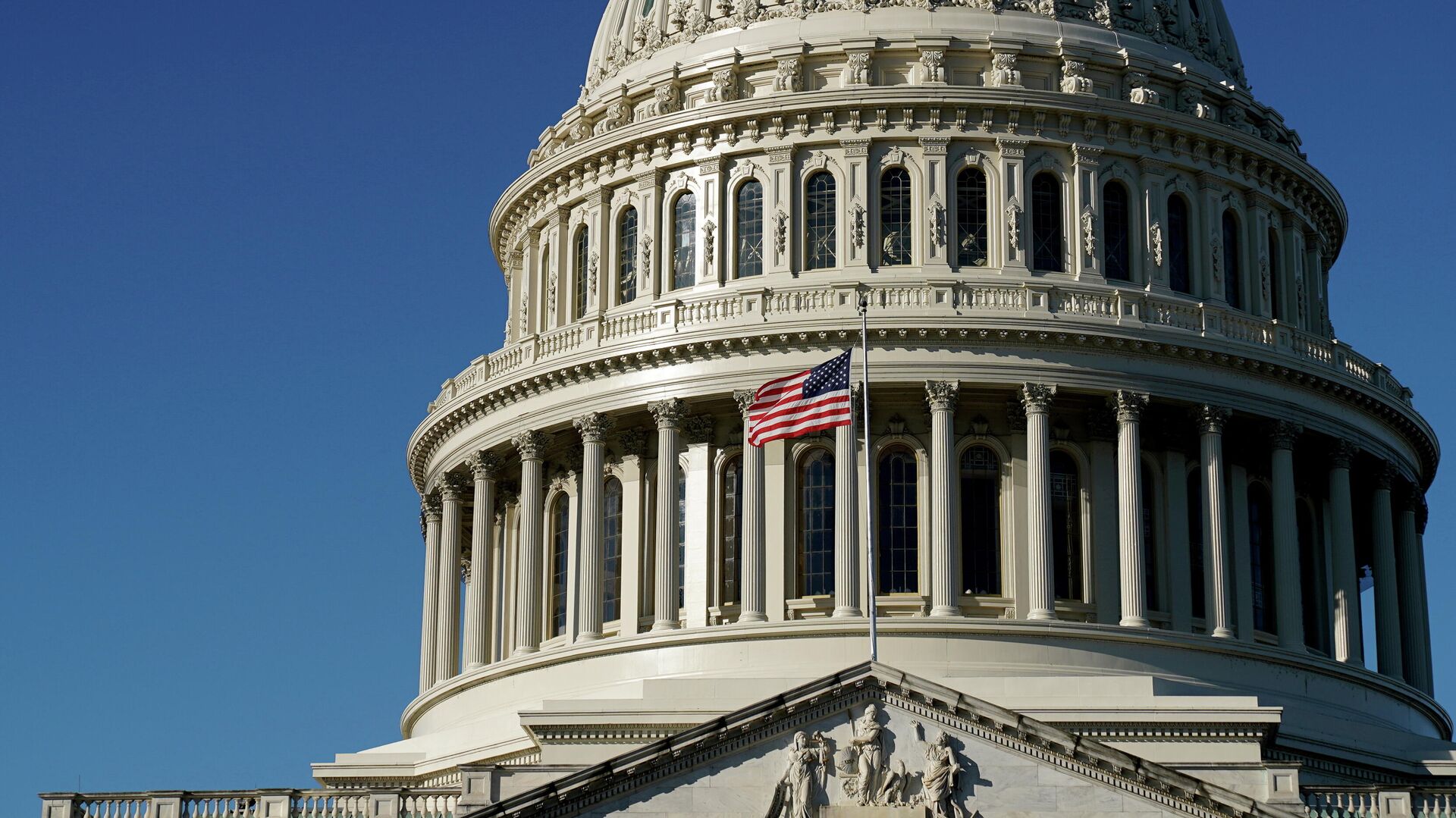https://sputnikglobe.com/20211114/countdown-to-2022-four-factors-that-could-flip-the-us-senate--1090732227.html
Countdown to 2022: Four Factors That Could Flip the US Senate
Countdown to 2022: Four Factors That Could Flip the US Senate
Sputnik International
The 2022 midterm elections in the US will see 34 Senate seats up for grabs. Control of the Senate, currently split 50-50 between Republicans and Democrats... 14.11.2021, Sputnik International
2021-11-14T21:56+0000
2021-11-14T21:56+0000
2021-11-14T21:52+0000
joe biden
donald trump
us senate
build back better
https://cdn1.img.sputnikglobe.com/img/07e5/0b/0a/1090619947_0:89:3325:1959_1920x0_80_0_0_66d96769ae8c838f60998556741b5f2f.jpg
Of the 34 senate seats up for grabs in 2022, only eight are projected to be tightly contested races. With apologies to Republicans and Democrats in the 26 other states, barring an unforeseen occurrence, those seats will remain in the incumbent party’s hands.The vulnerable seats that Democrats control are in Nevada, Arizona, Georgia, and New Hampshire, and the vulnerable Republican seats are in Wisconsin, Pennsylvania, North Carolina, and Florida. If each party holds, the Senate will remain locked at 50-50, with US Vice President Kamala Harris as the tiebreaker.An ABC News/Washington Post poll published on Sunday shows that Republicans are in a position to make significant gains in Congress in the 2022 midterms. If elections were held today, 51% of respondents said they would vote Republican, opposed to 40% who said they would vote for a Democrat.The early indicators look rosy for Republican candidates, but with a year until Election Day, a lot can change. It should be noted, the House is much more responsive than the Senate to broader national trends. These are the four factors that will determine if Republicans can flip the Senate in their favor:HistoryThroughout American history, the party of the president has consistently lost seats in both the House of Representatives and the Senate. However, Senate races more commonly buck that trend. Post-WWII, there have been five instances where the president’s party has added seats in the Senate and one where there was no net change.Over that same span, the president’s party lost, on average, 3.8 seats in the Senate per midterm election. For Republicans to hit the midterm average, they would need to retain Wisconsin, Pennsylvania, North Carolina, and Florida and then take each of Nevada, Arizona, Georgia, and New Hampshire.Expecting Republicans to do that is a tall task, but with the Senate in a deadlock, a single-seat advantage is all that is needed.Joe Biden’s PopularityA president’s popularity can make or break a Senate candidate. As noted, midterm elections usually see the president’s party suffer losses in the House and the Senate. Voters are not just selecting someone who will represent them in Washington, they’re selecting someone who will help or hinder the president’s agenda.Based upon current polling, Democratic candidates should be worried about their chances. According to FiveThirtyEight, 51.4% of Americans disapprove of Joe Biden, while 42.8% approve.There is still plenty of time for Biden to rebound. In March, he held a 55% approval rating, compared to a 39.1% disapproval rating. There is plenty of time for Biden’s popularity to sink further, however.Outside of New Hampshire, each Senate seat hanging in the balance is in a state that was highly competitive in the 2020 Presidential election. Nevada was decided by 2.4 points, Arizona 0.4, Wisconsin 0.6, Georgia 0.3, and Pennsylvania 1.2.Democrats must see Biden become more popular to retain their Senate seats in Nevada, Arizona, and Georgia.Democratic LegislationThe midterm elections could come down to the passing and popularity of Democratic bills. In a reductive sense, bills are what senators do. If voters like the bills a party is passing then that party has a chance to grow its base of support.The popularity of the infrastructure bill could play a significant role in who controls the Senate. Another wild card is how quickly the Build Back Better act is passed, and how will Americans react to it? Democrats holding power makes them an easy target, but it also gives them a platform to make policy. If the policy takes a hit, it could bolster the chances of their opponents.If the legislation is a dud, or it is difficult for voters to see the impact, then it could cause them to lose ground. The Democrats have a year to sell Americans on their vision for the country, while Republicans use that time to show how they’re failing.Post-Trump GameplanFormer US President Donald Trump’s political legacy continues to loom over American politics, with Democrats using him to generate fear, and Republicans using him to spur enthusiasm.How will the parties navigate a post-Trump political landscape in which some Republican candidates lean all in on the rhetoric, and bombast that powered Trump to the presidency in 2016? Others try to thread the needle of appealing to Trump’s base, but shy away from the attributes that alienated voters in the suburbs, which ultimately cost him the 2020 election.
https://sputnikglobe.com/20210908/french-media-gives-thoughts-on-what-might-be-behind-bidens-dwindling-popularity-1088884805.html
https://sputnikglobe.com/20211113/pop-goes-the-bbb-trump-economic-adviser-believes-inflation-will-end-bidens-build-back-better-act-1090716462.html
Sputnik International
feedback@sputniknews.com
+74956456601
MIA „Rossiya Segodnya“
2021
News
en_EN
Sputnik International
feedback@sputniknews.com
+74956456601
MIA „Rossiya Segodnya“
Sputnik International
feedback@sputniknews.com
+74956456601
MIA „Rossiya Segodnya“
joe biden, donald trump, us senate, build back better
joe biden, donald trump, us senate, build back better
Countdown to 2022: Four Factors That Could Flip the US Senate
The 2022 midterm elections in the US will see 34 Senate seats up for grabs. Control of the Senate, currently split 50-50 between Republicans and Democrats, will hinge on which party is able to hold or flip the most seats. Here are four factors that could swing control of the senate.
Of the 34 senate seats up for grabs in 2022,
only eight are projected to be tightly contested races. With apologies to Republicans and Democrats in the 26 other states, barring an unforeseen occurrence, those seats will remain in the incumbent party’s hands.
The vulnerable seats that Democrats control are in Nevada, Arizona, Georgia, and New Hampshire, and the vulnerable Republican seats are in Wisconsin, Pennsylvania, North Carolina, and Florida. If each party holds, the Senate will remain locked at 50-50, with US Vice President Kamala Harris as the tiebreaker.
An ABC News/Washington Post poll published on Sunday shows that Republicans are in a position to make significant gains in Congress in the 2022 midterms. If elections were held today, 51% of respondents said they would vote Republican, opposed to 40% who said they would vote for a Democrat. The early indicators look rosy for Republican candidates, but with a year until Election Day, a lot can change. It should be noted, the House is much more responsive than the Senate to broader national trends.
These are the four factors that will determine if Republicans can flip the Senate in their favor:
Throughout American history,
the party of the president has consistently lost seats in both the House of Representatives and the Senate. However, Senate races more commonly buck that trend. Post-WWII, there have been five instances where the president’s party has added seats in the Senate and one where there was no net change.
Over that same span, the president’s party lost, on average, 3.8 seats in the Senate per midterm election. For Republicans to hit the midterm average, they would need to retain Wisconsin, Pennsylvania, North Carolina, and Florida and then take each of Nevada, Arizona, Georgia, and New Hampshire.
Expecting Republicans to do that is a tall task, but with the Senate in a deadlock, a single-seat advantage is all that is needed.
A president’s popularity can make or break a Senate candidate. As noted, midterm elections usually see the president’s party suffer losses in the House and the Senate. Voters are not just selecting someone who will represent them in Washington, they’re selecting someone who will help or hinder the president’s agenda.
Based upon current polling, Democratic candidates should be worried about their chances. According to FiveThirtyEight, 51.4% of Americans disapprove of Joe Biden, while 42.8% approve. 
8 September 2021, 14:19 GMT
There is still plenty of time for Biden to rebound. In March, he held a 55% approval rating, compared to a 39.1% disapproval rating. There is plenty of time for Biden’s popularity to sink further, however.
Outside of New Hampshire, each Senate seat hanging in the balance is in a state that was highly competitive in the 2020 Presidential election. Nevada was decided by 2.4 points, Arizona 0.4, Wisconsin 0.6, Georgia 0.3, and Pennsylvania 1.2.
Democrats must see Biden become more popular to retain their Senate seats in Nevada, Arizona, and Georgia.
The midterm elections could come down to the passing and popularity of Democratic bills. In a reductive sense, bills are what senators do. If voters like the bills a party is passing then that party has a chance to grow its base of support.
The popularity of the infrastructure bill could play a significant role in who controls the Senate. Another wild card is how quickly the Build Back Better act is passed, and how will Americans react to it?

13 November 2021, 22:34 GMT
Democrats holding power makes them an easy target, but it also gives them a platform to make policy. If the policy takes a hit, it could bolster the chances of their opponents.
If the legislation is a dud, or it is difficult for voters to see the impact, then it could cause them to lose ground. The Democrats have a year to sell Americans on their vision for the country, while Republicans use that time to show how they’re failing.
Former US President Donald Trump’s political legacy continues to loom over American politics, with Democrats using him to generate fear, and Republicans using him to spur enthusiasm.
How will the parties navigate a post-Trump political landscape in which some Republican candidates lean all in on the rhetoric, and bombast that powered Trump to the presidency in 2016?
Others try to thread the needle of appealing to Trump’s base, but shy away from the attributes that alienated voters in the suburbs, which ultimately cost him the 2020 election.




